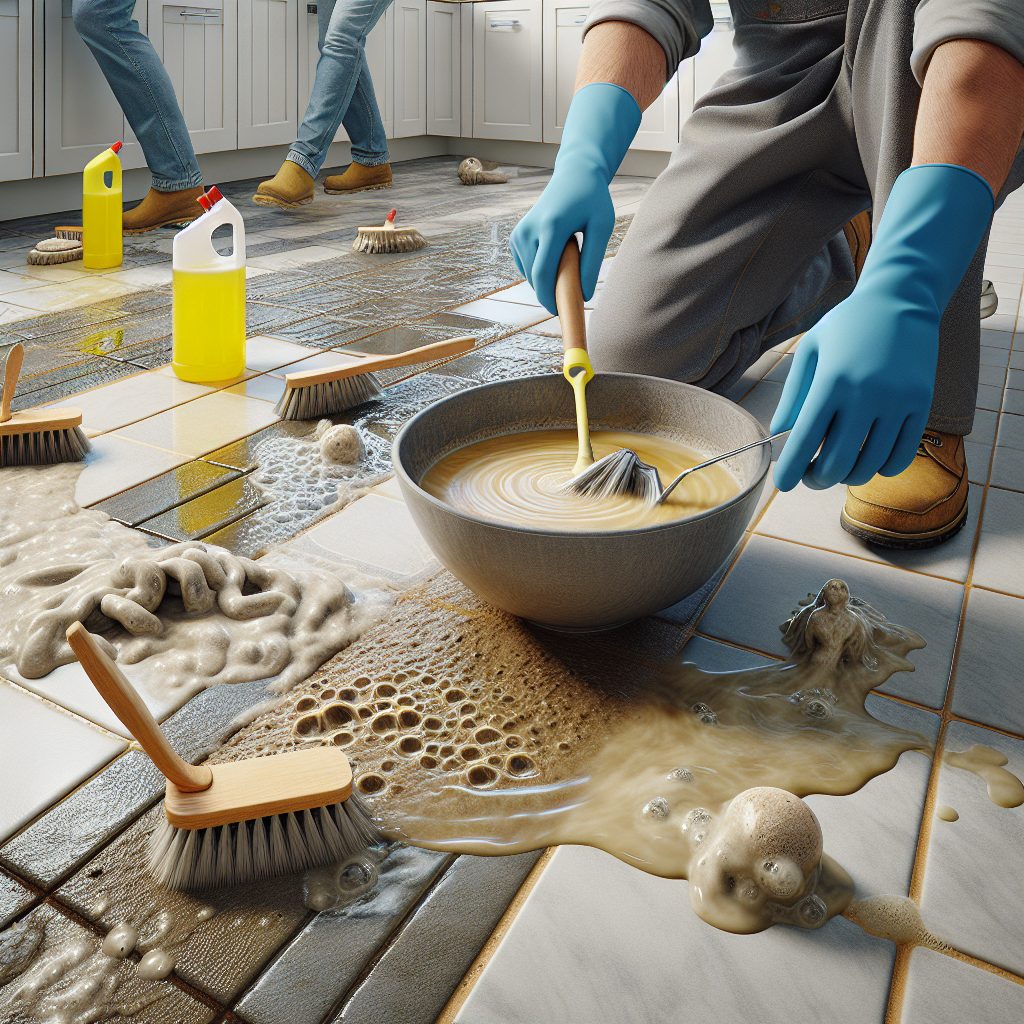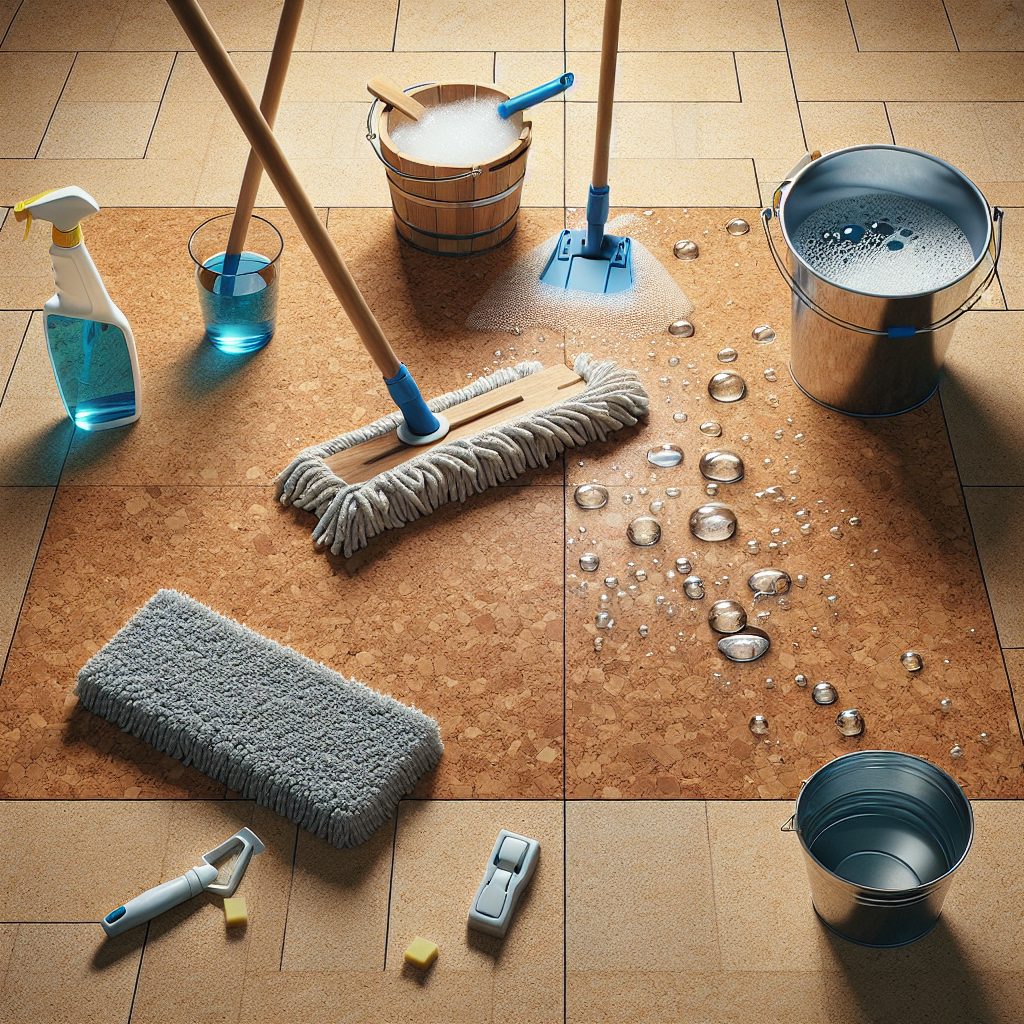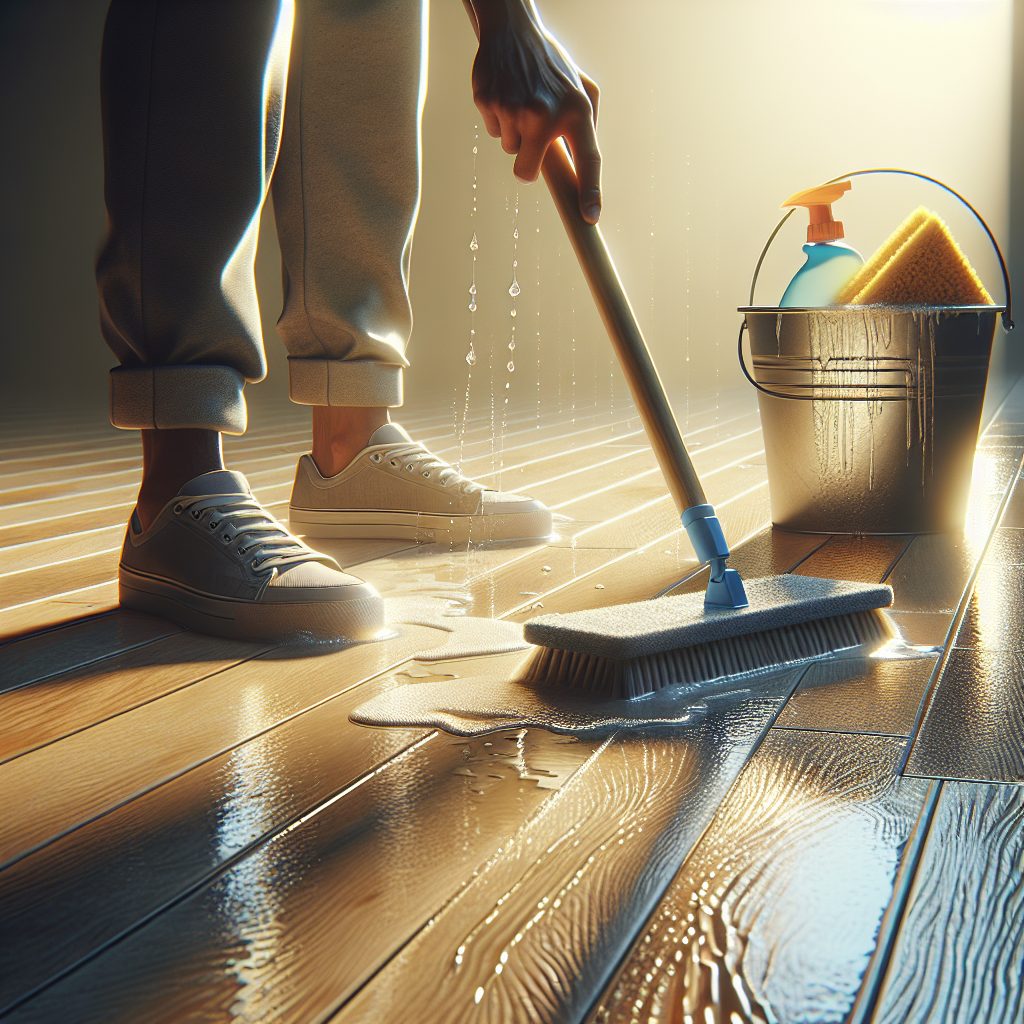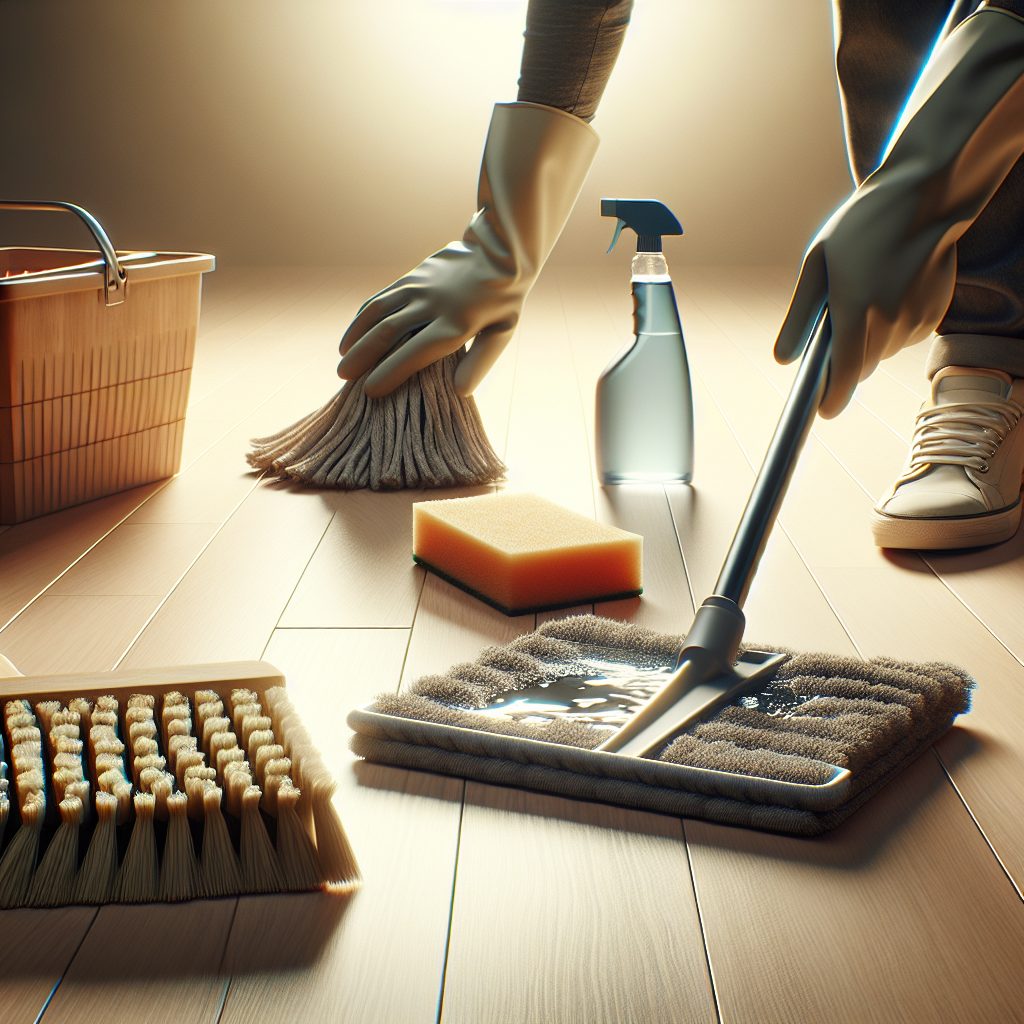
Grout, the dense fluid which is used to fill gaps or reinforce existing structures, is a staple in maintaining the integrity and aesthetic of tiled floors. However, it is also notorious for accumulating dirt and discoloration over time, making the cleaning process seemingly laborious and time-consuming. Traditional grout cleaning methods often involve hours of relentless scrubbing, which can be both exhausting and ineffective if the grime is particularly stubborn. Yet, those looking to restore the original luster of their floor tile grout are in luck. Modern approaches and clever tricks have emerged to tackle this task, ensuring your grout can be sparkling clean without the need for back-breaking scrubbing, which might just change how homeowners view the daunting chore of grout maintenance.
As we dive deeper into the realm of effortless grout cleaning, the forthcoming segments of our discussion will unveil a treasure trove of practical and accessible solutions designed to minimize effort and maximize efficiency. From innovative cleaning agents that promise to do the heavy lifting to household items you never thought could double as grout cleaners, the upcoming insights are aimed at transforming the seemingly insurmountable challenge of dirty grout lines into an easy, almost hands-off task. So, whether you’re a busy parent, a dedicated homeowner, or simply someone looking for a more streamlined cleaning routine, stay tuned as we explore the easy ways to achieve pristinely clean floor tile grout without the traditional scrubbing marathon.
Key Takeaways
1. Utilize a grout cleaning solution that can be sprayed onto the tile grout lines. Opt for commercially available grout cleaners or make a homemade mixture using vinegar and baking soda which react to break up the grime. Apply the cleaner liberally and allow it to sit for some time to penetrate and loosen the dirt without the need for physical scrubbing.
2. Steam cleaners can be an effective no-scrub method for cleaning floor tile grout. The high-pressure steam works to dislodge dirt, mildew, and grease that may have accumulated in the grout. It’s important to ensure that the grout is sealed before using this method to prevent damage from the moisture of the steam.
3. Oxygen bleach powder is a powerful cleaning agent that can refresh grout without scrubbing. Mix the powder with water to form a paste, apply it to the grout, and leave it to work for a period, often 15 minutes to an hour. After the solution has had time to act, rinse it off with water. Always ensure the area is well-ventilated when using bleach products, and test a small area first to check for any discoloration.
4. Another method involves using hydrogen peroxide, which is a natural and less harsh alternative to chlorine bleach. When applied directly to the grout lines or mixed with baking soda to create a paste, hydrogen peroxide can effectively clean without scrubbing. This substance works well on lighter grouts, targeting mold and mildew without the toxicity of stronger bleaches.
5. For a quick touch-up of dirty grout lines, consider using a grout pen. These pens can both clean and recolor grout, making it look refreshed and new. They are particularly useful for dealing with stubborn stains that are difficult to clean and provide a uniform look to the floor without the effort of scrubbing. Be sure to clean the grout as best as possible before applying the grout pen for optimal results.
What Are the Best Strategies for Cleaning Floor Tile Grout Without the Hassle of Scrubbing?
Steam Cleaning: A Chemical-Free Method
Steam cleaning is an incredibly effective way to clean grout without scrubbing. The high-pressure steam penetrates the porous grout, blasting away dirt, mold, and grime. Steam cleaners can be rented or purchased, and they require nothing more than water. It’s an eco-friendly and non-toxic method that leaves your grout looking refreshed without any backbreaking scrubbing. Always start with the lowest pressure setting and gradually increase it to prevent any damage to the grout.
Baking Soda and Hydrogen Peroxide: The Dynamic Duo
Creating a paste with baking soda and hydrogen peroxide can work wonders on your floor tile grout. Apply the mixture to the grout lines and let it sit for several minutes before rinsing it off with water. The natural whitening properties of both ingredients can help to restore the grout’s original color. This is particularly useful for light-colored grout that has become discolored over time.
Vinegar Solution: A Natural Cleansing Agent
If you’re dealing with mildly dirty grout, white vinegar can be the answer. Mix equal parts of white vinegar and warm water in a spray bottle. Spray the solution onto the grout lines and let it sit for about five minutes. Use a damp cloth or mop to wipe the area clean. Vinegar is mildly acidic, so it helps to dissolve soap scum and hard water stains without scrubbing. However, avoid using vinegar on natural stone tiles as the acid could damage them.
Oxygenated Bleach: Tackling Tough Stains Effortlessly
Oxygenated bleach is another excellent option for revitalizing grout without rubbing and scrubbing. Mix the oxygen bleach powder with water according to the manufacturer’s instructions and apply it to the grout. Allow it to work its magic for 10 to 15 minutes before wiping it away with a wet sponge. Unlike chlorine bleach, oxygenated bleach is less harsh and doesn’t leave a strong residue or odor behind.
Commercial Grout Cleaners: Quick and Effective
There are many commercial grout cleaning products available that are designed to clean without the need for scrubbing. Look for grout cleaners that are labeled as ‘no-scratch’ or ‘no-scrub’ to ensure they’re safe to use on your tiles. Follow the instructions carefully, as some may require you to leave the cleaner on the grout for a set period before rinsing it away.
How Can You Maintain Clean Floor Tile Grout Without Regular Scrubbing?
1. Wipe spills and stains immediately to prevent them from setting into the grout.
2. Regularly sweep and mop the floor to keep the tiles clean, which in turn, keeps the grout cleaner for longer.
3. Apply a sealer to the grout after a deep clean to help resist future stains and make it easier to clean.
4. Use a grout pen to color and seal the grout lines if they are too far gone, which can give them a fresh, new look without the need for scrubbing.
5. Implement these preventive maintenance steps consistently to extend the period between deep cleaning sessions, saving you time and effort.
Can I really clean floor tile grout without any scrubbing at all?
Yes, you can clean floor tile grout with minimal to no scrubbing by using the right cleaning solutions that can break down dirt and grime. These solutions often need to sit for a period of time to penetrate and loosen the dirt before being wiped away.
What cleaning agents are effective for cleaning tile grout without scrubbing?
Commonly used cleaning agents include vinegar and baking soda, hydrogen peroxide, oxygen bleach, or commercial grout cleaners formulated to remove dirt without scrubbing. Be sure to follow the manufacturer’s instructions for the best results.
Is vinegar safe to use on all types of tile grout?
Vinegar is generally safe for most types of tile grout, but it’s always a good idea to test a small, inconspicuous area first. However, avoid using vinegar on natural stone tiles as it can etch the surface.
How long should I let the cleaner sit on the grout?
Dwell time can vary depending on the cleaner and level of grout soiling. It’s typically recommended to let the cleaner sit for at least 10-15 minutes. Heavily soiled areas may require a longer period, sometimes up to an hour.
Can commercial steam cleaners effectively clean grout without scrubbing?
Yes, commercial steam cleaners can be a powerful tool for cleaning grout lines without scrubbing. The steam penetrates the grout and loosens the dirt, making it easier to wipe clean.
Are there any precautions I should take when using bleach-based products on grout?
When using bleach-based cleaning products, wear gloves and ensure the area is well-ventilated. Also, take care to protect colored grout, as bleach can cause discoloration.
What is an oxygen bleach, and how does it help clean tile grout?
Oxygen bleach is a non-toxic, eco-friendly cleaning agent that releases oxygen bubbles to penetrate and dissolve grime in grout. It’s a safer alternative to chlorine bleach, especially for homes with pets and children.
How often should I clean my tile grout to keep it looking new without scrubbing?
The frequency of cleaning depends on foot traffic and everyday wear and tear, but generally, you should aim to deep clean grout without scrubbing every 3 to 6 months to maintain its appearance.
Can I seal my grout to make no-scrub cleaning easier in the future?
Yes, sealing your grout after cleaning it can help protect against stains and dirt, reducing the need for frequent cleanings and potentially eliminating the need for scrubbing.
Are DIY grout cleaning solutions as effective as commercial cleaners?
DIY grout cleaning solutions can be just as effective as commercial cleaners for light to moderate soiling. However, for tougher stains, a commercial grout cleaner might be necessary to achieve a deep clean without scrubbing.
Final Thoughts
Cleaning floor tile grout without the arduous task of scrubbing is a welcome idea for homeowners and professionals alike. Utilizing the right techniques and solutions, as discussed in this article, can simplify maintenance and prolong the pristine appearance of tiled surfaces. Regular cleaning with gentle, yet effective products can minimize the need for laborious scrubbing sessions, saving time and preserving the integrity of your grout for years to come.
Always remember to choose cleaning solutions that are suitable for your tile and grout type to prevent any unintended damage. Proper sealing and frequent touch-ups with milder cleaners can help maintain the cleanliness of grout without the need for intensive labor. Embracing these easy cleaning methods will not only keep your floors looking great but will also promote a healthier living environment by reducing mold and mildew build-up in damp areas such as bathrooms and kitchens.



